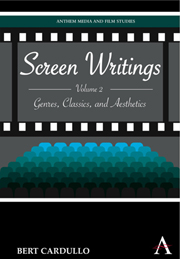Book contents
- Frontmatter
- Contents
- List of Illustrations
- Introduction: The Film of Value
- Part I Film Genres, Film Classics, and Film Aesthetics
- Interlude
- Part II Classification, Re-classification, and Assessment
- 8 Early vs. Later Bergman: Winter Light and Autumn Sonata Revisited
- 9 “Everyone Has His Reasons”: Words, Images, and La grande illusion in the Cinema of Jean Renoir
- 10 A Passage to Tokyo: The Art of Ozu, Remembered
- 11 Through the Looking Glass: The American Art Cinema in an Age of Social Change
- Bibliography of Related Criticism
- Index
- Plate section
9 - “Everyone Has His Reasons”: Words, Images, and La grande illusion in the Cinema of Jean Renoir
from Part II - Classification, Re-classification, and Assessment
Published online by Cambridge University Press: 05 March 2012
- Frontmatter
- Contents
- List of Illustrations
- Introduction: The Film of Value
- Part I Film Genres, Film Classics, and Film Aesthetics
- Interlude
- Part II Classification, Re-classification, and Assessment
- 8 Early vs. Later Bergman: Winter Light and Autumn Sonata Revisited
- 9 “Everyone Has His Reasons”: Words, Images, and La grande illusion in the Cinema of Jean Renoir
- 10 A Passage to Tokyo: The Art of Ozu, Remembered
- 11 Through the Looking Glass: The American Art Cinema in an Age of Social Change
- Bibliography of Related Criticism
- Index
- Plate section
Summary
Jean Renoir (1894–1979) completed his thirty-ninth motion picture, The Little Theatre of Jean Renoir, in 1970. His first film, The Water Girl, was made in 1924 during the silent era. What comes between is perhaps the most impressive body of filmmaking ever directed by one person. But, before any consideration of the length or quality of Renoir's career, one must first consider the length of his life – of his life, not just anyone who happens to survive for eighty-four years – because it gave him a unique place that would affect his art.
Now the history of film is full of such unique “places,” or remarkable confluences. (At least that's a cursory way to describe complicated matters of cultural and psychic history.) D. W. Griffith came along just when the newborn medium needed a genius to formulate its language. Eisenstein and Pudovkin came along in the Soviet Union just when the new society needed new artists to celebrate it in this new art form. And Jean Renoir connected La Belle Époque – from his equally famous father, the painter Auguste – to the last quarter of the twentieth century. And this made him an exponent of a view of art that doesn't promise to be generated again, and that the director amply elucidated in any number of interviews he gave from 1939 to 1975: art as community, from which one can make every bitter expedition into blackness, as Renoir certainly did, but whose communal nature supports the expedition and strengthens its unsentimental insistence.
- Type
- Chapter
- Information
- Screen WritingsGenres, Classics, and Aesthetics, pp. 127 - 148Publisher: Anthem PressPrint publication year: 2010



